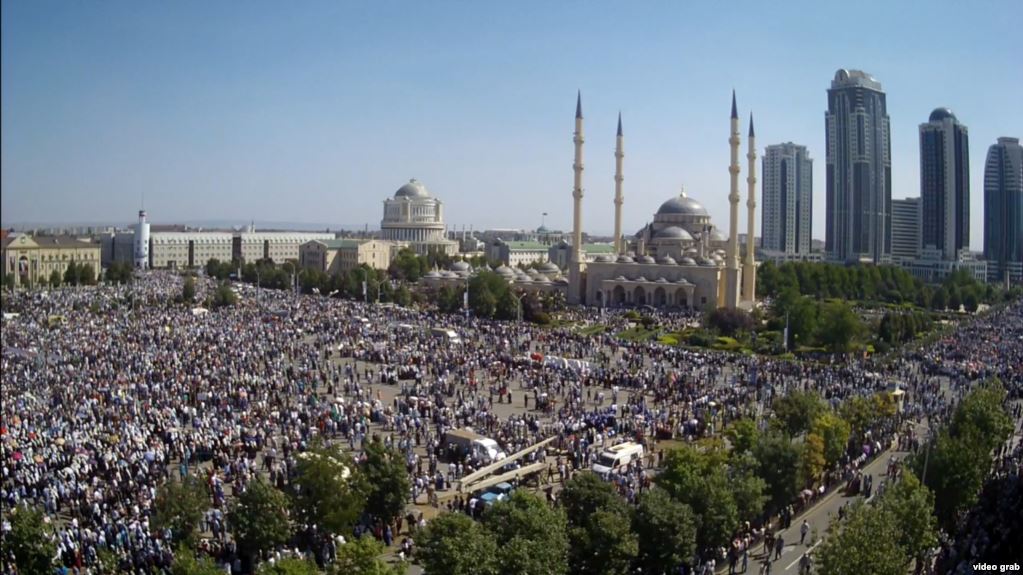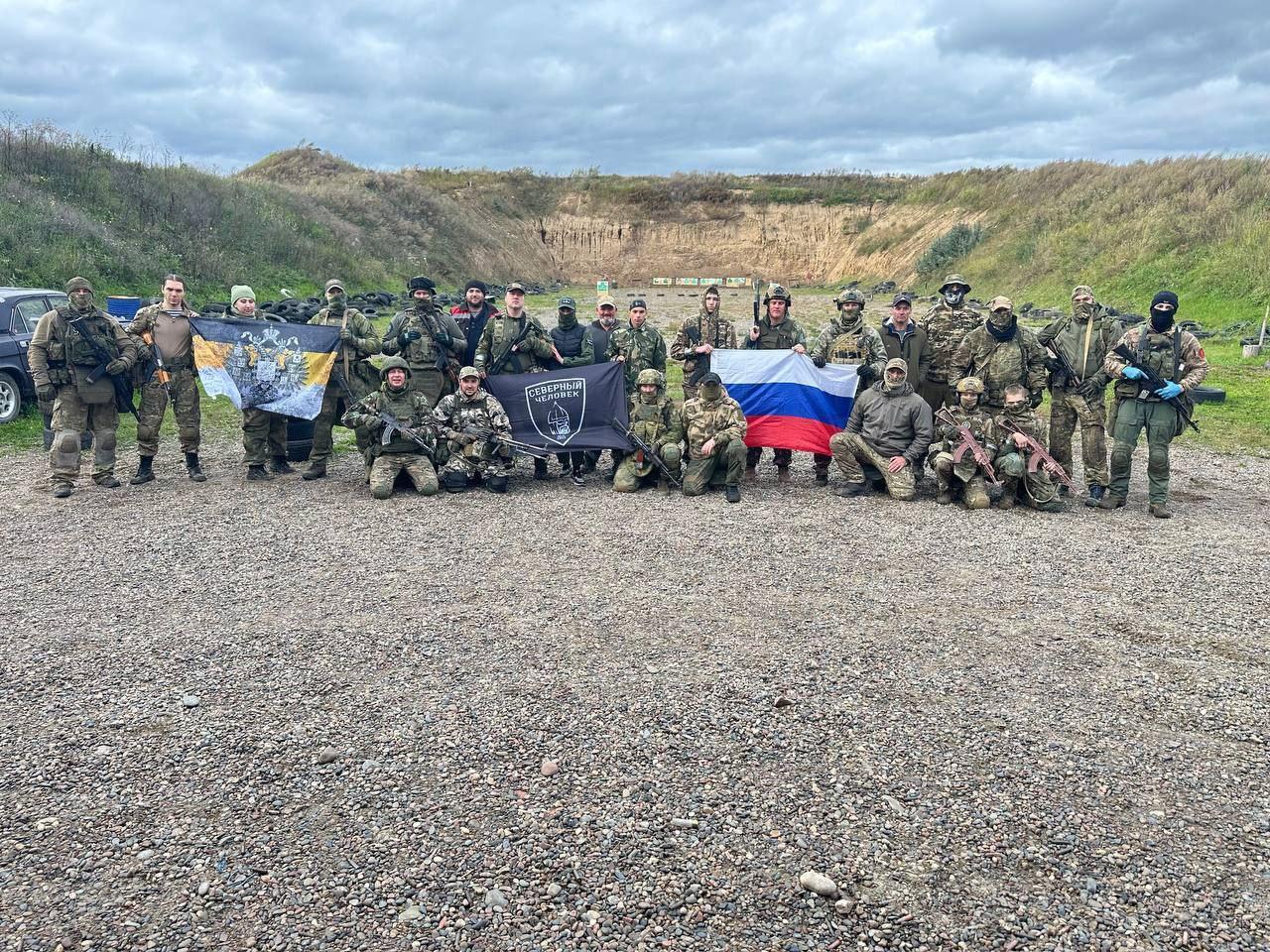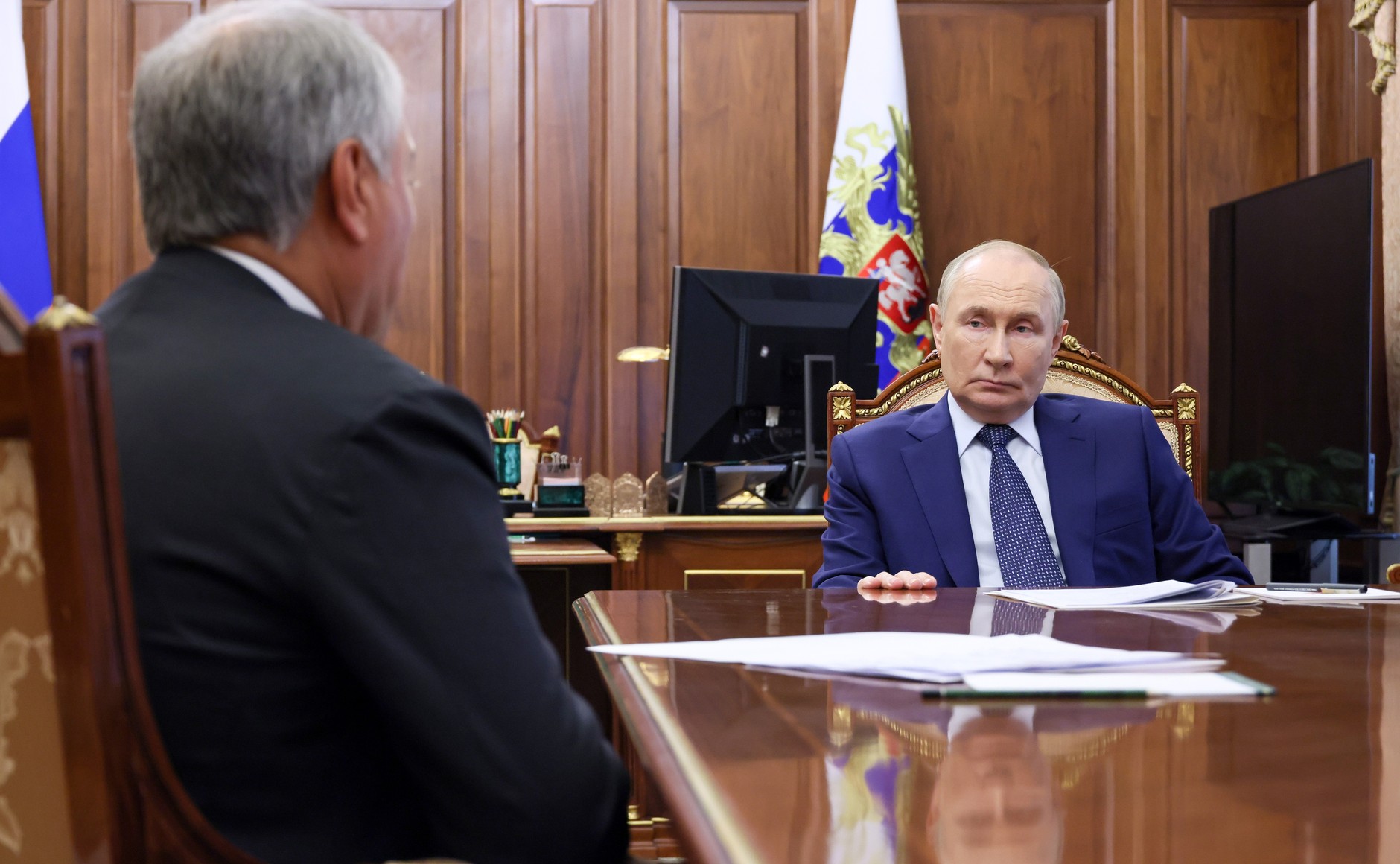
Far Away Myanmar Triggering Rise of Political Islam in Russia
Far Away Myanmar Triggering Rise of Political Islam in Russia
The reaction of Russia’s Islamic community to the ongoing prosecution of Rohingya Muslims in Myanmar occurred suddenly and unexpectedly. Groups organized unsanctioned rallies in front of the Myanmar embassy in Moscow, in Makhachkala (Dagestan) and in Grozny (Chechnya), on September 3 and 4. Some demonstrators were heard shouting “Allah Akbar” and “Buddhists are terrorists.” Reportedly, the authorities were afraid to disperse the protesters by force, and the Russian government and law enforcement agencies were paralyzed by total confusion. The official response displayed a marked contrast to the way Russian security services normally deal with opposition-organized rallies (Politcom.ru, September 7).
The protests notably occurred while the head of state, President Vladimir Putin, was outside the country, traveling to China to attend a summit of the BRICS (a loose political grouping of developing economies Brazil, Russia, India, China and South Africa). Without his involvement, no one in the government seemed ready to make any decisive moves. Strikingly, the national TV channels were all silent about the rallies.
The reaction within Russia to these protests varied widely, but fell into five main categories. First, some blamed the United States for being behind the rallies and fueling the Russian Muslims’ reaction via the Internet (Cont.ws, September 4). A second group pointed to the political and regional motivations Chechen republic head Ramzan Kadyrov to support the rally in Grozny and position himself as a “guardian of Muslims” as well as take up the mantle of “leader” of Russian Muslims (Carnegie.ru, September 4). Third, certain commentators accused Saudi Arabia and Turkey of stirring “emotional hysteria.” According to one prominent member of this group, Maxim Shevchenko, Russian Muslims should “cool their heads” (Realnoevremya.ru, September 4).
A fourth explanation sought to ascribe some positive outcomes for Russian foreign policy to come out of the pro-Rohingya rallies, Kadyrov’s active involvement, and the apparent politicization of Islam across Russia. Namely: 1) these incidents can help to expand Russia’s “duhovnye skrepy” (“spiritual bonds”) into the Muslim World, beyond Moscow’s traditional national interests; 2) “standing up for the Rohingya people” is a useful propaganda tool for domestic purposes in Russia; (3) Kadyrov’s strong loyalty to Moscow and particularly President Putin makes the Chechen strongman’s claim of leadership over all Russian Muslims more palatable to the Russian government (Gazeta.ru, September 4).
Finally, fifth, some pointed out the political factors behind the Russian Muslim rallies in solidarity with people suffering half a world way. The very fact that Muslims of post-Soviet Russia reacted via mass mobilization and such high levels of self-organization illustrates how much the country is changing in religious and social terms. In one notable example, activists from Makhachkala initiated a petition on the website Change.org, addressed to the Permanent Representative of the Russian Federation to the United Nations, calling on him to raise the Rohingya issue at the UN and support a resolution in defense of this embattled Myanmar minority group. The petition additionally urges Russia not to follow China’s interests vis-à-vis Myanmar (Change.org, accessed September 13). Also illustratively, Chechen advocate Murad Musaev initiated a pro bono legal action “Rohingya Alert” (Facebook.com/RohingyaAlert, accessed September 13). He has already visited Myanmar together with an activist from Ingushetia and has been speaking out about witnessing ethnic cleansing there (Riaderbent.ru, September 5).
Another interesting case has been the reaction of the Russian regional Muftiates to the Russian Muslim rallies earlier this month. Almost every official Russian Islamic institution issued a condemnation of the human rights violations taking place in Myanmar. But at the same time, they tried to avoid any linkage with the demonstrations that were held in Moscow and the North Caucasus. For instance, in Dagestan, the local Muftiate officially eschewed any responsibility for the unauthorized rallies and called for social order (Muftiyatrd.ru, September 7).
Lastly, the Myanmar protests highlighted how Islamic sentiment is capable of bridging the numerous ethnic divides within the Russian Federation. For instance, the throngs of people participating in the rally in front of the Myanmar embassy in Moscow clearly belonged to different ethnic groups of Russia as well as immigrant communities from various Central Asian countries. The starkest example of this inter-ethnic Muslim cooperation was a mobile text message sent in Moscow to garner support for the rally. It read, “Dagestan, Karachai, Tatars, Kazakhs, Uzbeks, Ingush, Chechens […] we are all one nation—nation of Muslims! Show your Unity!” (Tvrain.ru, September 3). The Kremlin will thus need to fine tune its approach for how to deal with this demonstrated solidarity between Russian Muslims and Muslims with immigrant backgrounds.
Crimean Tatars, whose homeland was illegally annexed by Russia in 2014, also joined these protests. This nationality strongly identifies with the Rohingya people, since Russia’s annexation of the Crimean peninsula raised serious concerns of expulsion, suppression or worse at the hands of the Russian government (see EDM, March 21, 2014; April 1, 2014; May 28, 2016). Thus, the Crimean Tatars actively used social networks to call for support to the Rohingya people. Moreover, the Crimean Muftiate organized a collection of humanitarian assistance for the Rohingya in coordination with other Muslim organizations in the Russian Federation (Krymr.com, September 6). It is worth underscoring here that to the extent Crimean Tatars are involving themselves in broader Russian social life (which they usually avoid), this integration is happening mainly via a collaboration with Russian Muslim communities.
Meanwhile, two crucial Muslim groups from the Russian heartland, Bashkirs and Volga Tatars, were conspicuously silent during the climax of the pro-Rohingya demonstrations. In the case of the Volga Tatars, the reason may be related to the fact that they are currently in the middle of tough negotiations with Moscow regarding the continuation of the Tatarstan-Moscow power-sharing accord (see EDM, April 13). The Tatars do not want to irritate the Kremlin; and after Kadyrov’s forceful and assertive behavior, it is more likely that Moscow will make some concessions to Kazan.
Thus, Russians woke up after September 3 in a new Russia, where Islam and Muslims are now more willing to emerge into the open. The main challenge for the broader Russian society and the authorities will be how to adapt these tectonic changes to Russian political realities.


